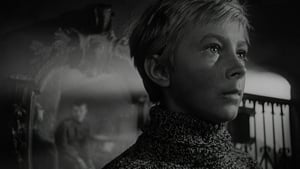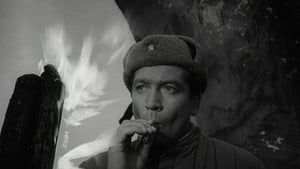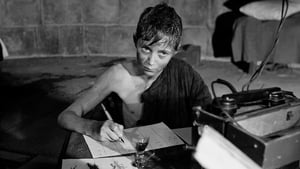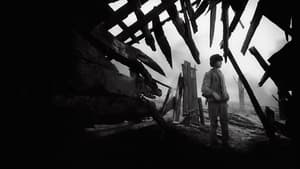Contact: [email protected]
Video Sources 0 Views

Synopsis
[ez-toc]





Introduction
In the realm of classic cinema, the journey of old films from black-and-white to vibrant color has often sparked debates among cinephiles. One such cinematic gem that recently underwent this transformation is “Ivan’s Childhood,” originally released in 1962. This colorized version offers audiences a fresh perspective on director Andrei Tarkovsky’s work and the poignant narrative of war-torn Soviet landscapes.
Read Media File Transfer Agreement: Terms and Conditions
Read FAQ
Brief Overview of “Ivan’s Childhood Colorized” “Ivan’s Childhood Colorized” is a Soviet war film directed by the visionary Andrei Tarkovsky. Released in 1962 during a period of artistic and political upheaval in the Soviet Union, the film tells the story of a young boy, Ivan, navigating the harsh realities of World War II. Known for its poetic and introspective approach, the film explores the impact of war on innocence and the haunting memories that linger in its aftermath.
Significance of Colorization in Film Restoration The decision to colorize “Ivan’s Childhood Colorized” brings forth questions about the preservation and reinterpretation of classic cinema. Colorization, a controversial practice in film restoration, has the potential to breathe new life into old movies, making them more accessible to contemporary audiences. This article delves into the journey of “Ivan’s Childhood Colorized” through the lens of colorization, exploring its impact on storytelling and visual aesthetics.
Introduction to Director Andrei Tarkovsky and His Style Andrei Tarkovsky, a maestro of Soviet cinema, is renowned for his poetic and philosophical approach to filmmaking. His films often blur the lines between reality and dreams, creating a distinct visual and emotional experience. Before we dive into the colorized version of “Ivan’s Childhood Colorized,” it’s essential to understand Tarkovsky’s directorial style and how it shapes the narrative and aesthetics of his films.
The Journey of “Ivan’s Childhood Colorized”
Release Date and Origin of “Ivan’s Childhood” “Ivan’s Childhood” first graced the silver screen in 1962, emerging from the creative crucible of the Soviet Union. The film arrived during a period when the world was still grappling with the scars of World War II, offering a poignant reflection on the human cost of conflict. Tarkovsky’s vision captured the essence of the time, leaving an indelible mark on Soviet cinema.
Summary of the Plot and Themes The heart of “Ivan’s Childhood Colorized” lies in its exploration of war’s impact on the innocence of a child. Ivan, the protagonist, becomes a poignant symbol of the toll that conflict takes on the human psyche. The film weaves a narrative tapestry that delves into the emotional complexities of war, using Ivan’s journey as a lens to examine the broader human experience.
Importance of the Film in Soviet Cinema “Ivan’s Childhood Colorized” holds a special place in the annals of Soviet cinema. Tarkovsky’s film transcends the war genre, offering a deeply humanistic perspective that resonated with audiences and critics alike. Its success paved the way for Tarkovsky’s future masterpieces, solidifying his reputation as a visionary director unafraid to explore the depths of the human soul.
Exploring the Artistry of Andrei Tarkovsky
Tarkovsky’s Unique Directorial Style and Techniques At the core of Tarkovsky’s brilliance lies his unique directorial style, characterized by long takes, contemplative pacing, and symbolic imagery. “Ivan’s Childhood Colorized” showcases Tarkovsky’s ability to convey profound emotions through visual storytelling, setting the stage for his later cinematic triumphs.
Influence of Cinematography on His Films Cinematography plays a pivotal role in Tarkovsky’s films, and “Ivan’s Childhood Colorized” is no exception. The stark black-and-white cinematography of the original version accentuates the desolation of war-torn landscapes, creating a haunting visual language that resonates with the film’s themes.
Examining Editing Choices in “Ivan’s Childhood Colorized” Tarkovsky’s approach to editing is deliberate and meticulous, allowing scenes to unfold organically. The pacing of “Ivan’s Childhood Colorized” reflects the internal struggles of its characters, inviting viewers to immerse themselves in the psychological landscape of war. The colorized version provides a fresh canvas to reassess Tarkovsky’s editing choices and their impact on storytelling.
The Controversy: Colorizing a Classic
Brief History of Film Colorization Colorization, the process of adding color to black-and-white films, has a contentious history in the film industry. Originating in the 1980s, it aimed to breathe new life into classic movies for modern audiences. However, purists argued that it compromised the artistic integrity of the originals, sparking a heated debate about the ethical implications of altering cinematic history.
Impact of Colorization on the Industry The controversy surrounding colorized movies extends beyond individual preferences. It raises questions about the evolving nature of film as an art form and the responsibility of preserving cinematic heritage. As we delve into the colorized version of “Ivan’s Childhood Colorized,” we confront the broader implications of colorization in the realm of film restoration.
Pros and Cons of Colorizing Older Films While colorization introduces a fresh perspective to classic films, it inevitably alters the viewing experience. Some argue that it makes these films more accessible to contemporary audiences, bridging the gap between generations. However, purists contend that it erases the original artistic vision, diluting the intended impact of the director and cinematographer.
Restoring the Colors: The Process Behind “Ivan’s Childhood Colorized” Colorized Version
Understanding How the Colorized Version Was Created The colorization process involves meticulous research and digital technology to recreate an authentic color palette. For “Ivan’s Childhood Colorized,” the restoration team worked tirelessly to capture the essence of Tarkovsky’s vision while infusing it with a vibrant spectrum. This section unravels the intricacies of the colorization process, shedding light on the challenges and considerations involved.
Challenges and Considerations in Color Restoring “Ivan’s Childhood Colorized” Colorizing a film requires a delicate balance between preserving the director’s intent and adapting to modern sensibilities. The restoration team faced challenges in recreating the nuances of Tarkovsky’s cinematography while ensuring that the colorized version enhanced rather than detracted from the emotional impact of the film.
Analyzing the Visuals: Aesthetics in Original and Colorized Films
Comparison of Visual Storytelling The transition from black-and-white to color transforms the visual narrative of “Ivan’s Childhood. Colorized” This section compares key scenes in both versions, exploring how colorization influences the audience’s perception and emotional engagement. The juxtaposition of the two versions provides a nuanced understanding of the choices made in the restoration process.
Impact of Colorization on Audience Perception and Immersion Colorization has the power to rekindle interest in classic films for audiences accustomed to modern visuals. By infusing color into “Ivan’s Childhood Colorized,” the restoration aims to make Tarkovsky’s work more accessible and relatable. However, it also prompts reflection on the role of aesthetics in shaping our connection to cinematic storytelling.
The Significance of Setting: War-Torn Landscapes in “Ivan’s Childhood Colorized”
Examining the Role of the War-Torn Setting The landscapes of war play a pivotal role in “Ivan’s Childhood Colorized,” becoming a character in their own right. The desolation and destruction mirror the internal struggles of the characters, creating a visceral connection between the narrative and its surroundings. This section delves into the significance of setting in shaping the emotional depth of the film.
Dreams and Memories: Symbolic Imagery in Tarkovsky’s Films
Interpretation of Dream Sequences Dream sequences are a recurring motif in Tarkovsky’s films, serving as windows into the characters’ subconscious. In “Ivan’s Childhood Colorized,” dreams become a canvas for exploring the psychological impact of war on young Ivan. This section analyzes the symbolism embedded in these dreamscapes and their contribution to the overall thematic richness of the film.
Exploring Symbolic Meaning in “Ivan’s Childhood Colorized” Tarkovsky’s films are renowned for their layers of symbolism, inviting viewers to unravel hidden meanings beneath the surface. “Ivan’s Childhood” is no exception, incorporating religious and existential themes. This section delves into the symbolic tapestry woven by Tarkovsky, offering insights into the deeper meaning behind the imagery presented on screen.
The Portrayal of War through Innocent Eyes
Unique Perspective on War What sets “Ivan’s Childhood” apart from conventional war films is its exploration of conflict through the lens of a child. Ivan’s innocence and vulnerability juxtaposed against the brutal realities of war create a poignant commentary on the human cost of conflict. This section explores the impact of the child’s perspective on the audience’s emotional engagement with the narrative.
Religious Undertones in “Ivan’s Childhood”
Examining Religious Themes and Imagery Religious symbolism permeates Tarkovsky’s body of work, and “Ivan’s Childhood” is no exception. Christian imagery is subtly interwoven into the film, adding layers of meaning to the narrative. This section unpacks the religious undertones in Tarkovsky’s cinema, shedding light on the nuanced exploration of faith within the context of war.
Legacy and Recognition: Awards for “Ivan’s Childhood”
Achievements at Prestigious Film Festivals and Award Ceremonies “Ivan’s Childhood” garnered critical acclaim and recognition on the global stage. The film received the Golden Lion at the Venice Film Festival, marking its triumph in the international cinematic landscape. Additionally, it earned the title of Best Foreign Language Film at the 36th Academy Awards, solidifying its place among the finest works of world cinema.
Analysis of Critical Reception, Then and Now While contemporary reviews praised the film for its artistic merit and emotional resonance, the colorized version invites a reevaluation of its reception. This section analyzes how the film has aged over time, considering the evolving perspectives of audiences and critics in the context of the colorized restoration.
Preserving Cinematic Gems: Importance of Film Restoration
Significance of Preserving and Restoring Classic Films The process of restoring and preserving classic films is a crucial endeavor to ensure that cinematic masterpieces endure for future generations. This section explores the broader importance of film restoration in maintaining the cultural and historical legacy of cinema. The discussion touches upon the responsibility of preserving the integrity of the original while embracing technological advancements.
Role of Colorization in Enhancing Accessibility and Relevance Colorization emerges as a tool to enhance the accessibility and relevance of classic films to modern audiences. By breathing new life into “Ivan’s Childhood,” the colorized version seeks to bridge the gap between generations and introduce Tarkovsky’s work to a broader audience. However, it prompts a nuanced conversation about the delicate balance between preservation and adaptation.
The Enduring Impact of “Ivan’s Childhood”
Discussion on the Film’s Lasting Influence “Ivan’s Childhood,” whether experienced in its original black-and-white form or through the prism of colorization, continues to leave an indelible mark on cinema. This section explores the enduring impact of the film on subsequent generations of filmmakers, artists, and cinephiles. Tarkovsky’s legacy, intertwined with the film’s thematic richness, resonates in the works of those who followed in his footsteps.
Final Thoughts on Preserving Film Integrity and Embracing Technological Advancements As we conclude our journey through the colorized version of “Ivan’s Childhood,” it is essential to reflect on the delicate balance between preserving the integrity of classic films and embracing the technological advancements that enhance their accessibility. The intersection of tradition and innovation in film restoration raises critical questions about how we navigate the evolving landscape of cinema without compromising its timeless essence.
In the realm of old movies and colorized classics, “Ivan’s Childhood Colorized 1962” stands as a testament to the enduring power of storytelling and the delicate art of film restoration. As audiences revisit this cinematic masterpiece, they embark on a journey through war-torn landscapes, dreamscape symbolism, and the profound impact of innocence in the face of conflict. The colorization of “Ivan’s Childhood” invites us to reevaluate the past through a contemporary lens while preserving the timeless beauty of Tarkovsky’s vision for generations to come.




















